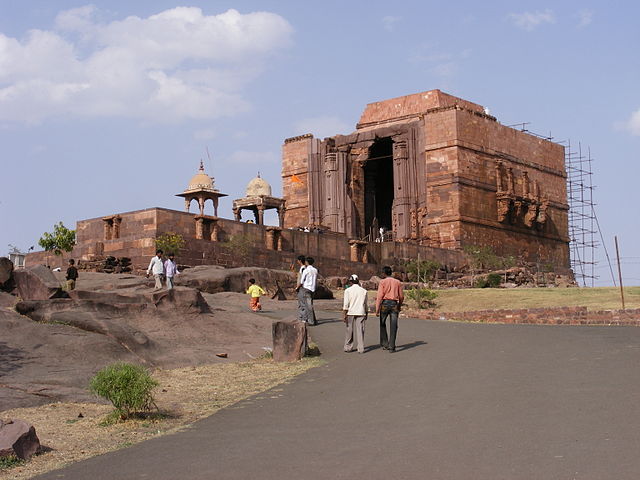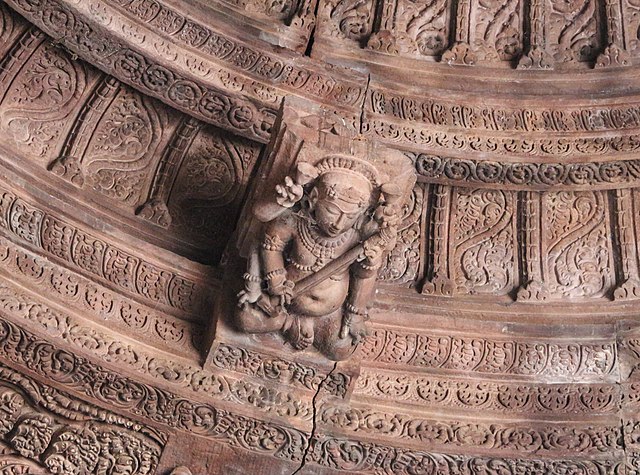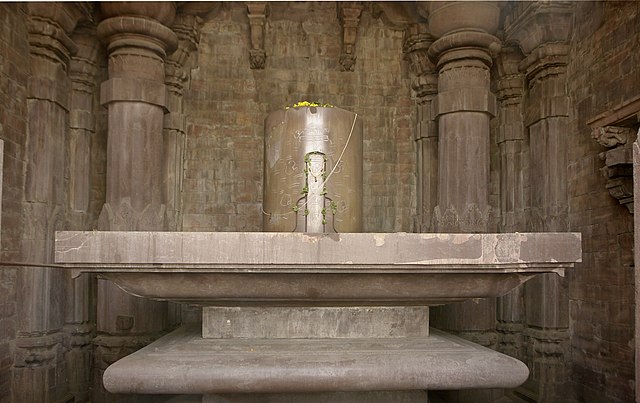Bhojpur, which is around 28 kilometres from Bhopal, is well-known as an archaeological site and is known for the spectacular Shiva Temple and Cyclopean Dam ruins. The Shiva Temple, also known as the Bhojeshwar Temple, has acquired the name as “Somnath of the East.”
It is said that the Bhojeshwar temple was founded by the Parmar king of Dhar, Shri Raja Bhoj (1010-53) and was named after him.
Dedicated to Lord Shiva , it is said to have a 7.5ft high Shiva Linga.

image courtesy: wikipedia
The Paramara king Bhoj is thought to have initiated the temple’s construction in the eleventh century. The building construction was abandoned for an unidentified reason. The architectural designs are inscribed on the nearby rocks. Scholars have been able to better grasp the 11th-century India’s temple construction methods because to the incomplete materials left at the site, the architectural designs cut into the rocks, and the masonry marks.
The Archaeological Survey of India has recognised the temple as a Monument of National Importance (ASI).
Although the temple is incomplete, the temple has a spectacular rising strength of line and is supported by four pillars. It is a simple square with an outside area of 66 feet.
The pillars, like the dome, are huge, but their tapering form gives them a unique grace. A 24-faced segment emerges from the lowest of the three divisions, an octagon with 2.12 feet of facets.
The two superbly sculpted figures that stand on either side of the doorway are in strong contrast to the doorway, which is elaborately carved from above and plain from below. The three other sides are balconies, each supported by four ornately carved pillars and large brackets.

image source – wikipedia
The sanctum’s lingam rises to an impressive height of 7.5 feet and measures 17.8 feet in circumference. The architectural harmony of the lingam and platform produces a wonderful combination of strength and lightness.
The platform is a gigantic 21.5 feet square platform built of three layered limestone slabs. The earthen ramp that was used to raise the temple to dome level still stands since it was never finished for an unknown reason.
If it had been finished, it unquestionably would have been a work of art unique to its kind and without precedent anywhere in the world.
The temple stands as one of the finest examples of temple architecture of the12th and 13th century.
A Jain shrine that is near to the Bhojeshwar temple is also unfinished and has a similar stone raising ramp. One 20-foot-tall enormous statue in this shrine houses three images of the tirthankaras: one of Mahavira and two of Parsvanath.
There was once a sizable lake west of Bhojpur, but all that is left today are the remnants of the majestic old dams that kept its water in. The location was carefully chosen since, with the exception of two gaps, a natural wall of hills surrounded the entire area. A 250 square mile area of water was supported by the embankments.
This great work is ascribed to Raja Bhoj, but it may possible be of an earlier date.
How to reach Bhojeshwar temple?
- How to reach bhojeshwar temple from Bhopal ? The temple is around 30 Kms from Bhopal,
- Bhopal Raja Bhoj airport offers pre-paid taxi services to the Bhojpur temple.
- Pendra Road, located 17 kilometres from the centre of the city, is the closest railhead to Amarkantak. Amarkantak is 48 kilometres away from Anuppur, which is extremely convenient for travellers.
- From Pendra Road, taxi fares are Rs 300; from Anuppur, they are Rs 600.
- There are buses operated by the government that depart from Pendra Road, Shahdol, and Bilaspur. Buses connect Amarkantak with Jabalpur (245 kilometres), Rewa (261 kilometres), and Shahdol (67 km).

